Drawa National Park in Poland
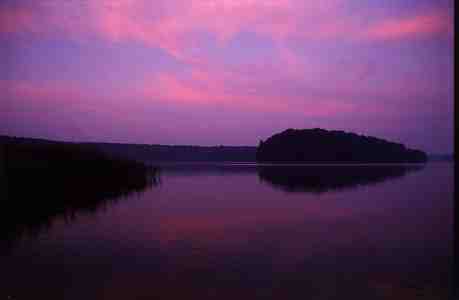

|
Strong points Good preserved numerous elements of nature; its combination is unique in Poland High biodiversity Some very rare in Poland elements (meromictic lake, natural beech forests, locality of Chamaedaphne) Low degree of human pressure |
Weak points Strongly transformed forest stands Symptoms of anthropogenic degeneration almost whole nature, as a result of its past management |
|
Opportunities Possibility to create a "model" area of renaturalisation without destroying the existing values Possibility of sustainable tourism |
Troubles Pressure for economic development of area Lack of management plan (it is in preparing !) Lack of knowledge about park nature and about technics of renaturalisation Abandonig traditional forms of land use, decreasing of biodiversity as a result of for example abandonikg meadows |
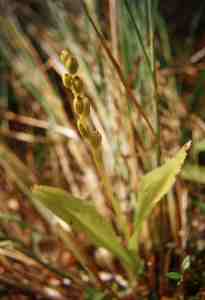
Flora
- ca 900 species of vascular plants, including rare in Poland: Chamaedaphne calyculata (one of 10 Polish localities), Vaccinium microcarpum, Drosera anglica, Drosera intermedia, Cladium mariscus, Liparis loeseli, Lilium martagon, Sorbus torminalis, Carex dioica, Carex diandra, Epipactis palustris. 27 native tree species. [See vascular flora checklist] - ca 200 species of moses, including rare in Poland: Dicranum bergeri, Sphagnum tenellum, Sphagnum fuscum, Sphagnum subsecundum, Helodium blandowii, Pohlia sphagnicola, Cinclidium stygium, Neckera crispa [See bryophyta checklist] - above 206 species of lichenes, including rare in Poland: Lecania sylvestris, Micraea intrusa, Opegrapha subparalella, Arthonia aspersella, Aspicilla excavata. [See lichenes checklist] - numerous species of fungi, with some interesting species connected with dead wood on the forest floor. [See fungi checklist]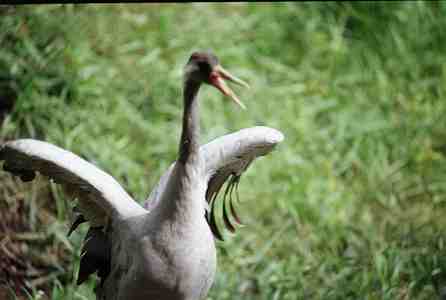 Fauna
- ca 100 species of breeding birds, including rare in Poland: Haliaetus albicilla (2-3 pairs), Pandion haliaetus (2 pairs), Aquilla clanga (1-2 pairs), Bubo bubo (4-5 pairs), numerous Bucephala clangula, Mergus merganser, Motacilla cinerea, Alcedo atthis, Phalacrocorax carbo, Ciconia nigra, Ciconia ciconia, Milvus milvus, Milvus migrans, Pernis apivorus, Tringa ochropus. [See birds checklist]
- ca 40 species of mammals, including numerous population of rare in Poland: otter (Lutra lutra) and beaver (Castor fiber). [See mammals checklist]
- ca 30 species of fishes, including rare in Poland: Salmo salar, Salmo trutta, Thymallus thymallus, Vimba vimba, Coregonus lavaretus, Coregonus albula. [See fishes checklist]
- numerous interesting species of invertebrates, for example Trichoptera, Ephemeroptera, Odonata, Cerambycidae and other groups.
Landscape
-The Drawa National Park represents the typical landscape of postglacial outwash plain, with complicated net of gullies, partly filled by lakes, also with numerous icemelting kettles. The plain is covered by the big forest complex. Post-glacial deposits (mainly sands) building the bedding of the Park are rich in calcium carbonate, what is reflected in the geochemistry of the landscape and also in its flora (calciphil species, as twig rush Cladium mariscus, calciphil plant associations in the lakes and on the swamps).
- The Drawa National Park represents the "forest and lakes" landscape, typical for the Polish Lake District. Fauna of mammals and birds is typical for this landscape composition - there are numerous species, demanding the both kind of biotops for their live (for example trees for nesting and lakes for feeding).
- The greatest natural wealth of the Park are ecosystems connected with water (rivers, lakes, swamps). They cover about 15% of the area.
- The most valuable nature elements are rivers - Drawa and P³ociczna - of a character typical of the young post-glacial landscape (the rapid current, little variability of flux in annual cycle, winding river-bed). These rivers have interesting reophil plant communities (comm. of an alga - Hildebrandtia rivularis, comm. of Batrachium sp.), and reophil fish fauna with Salmo trutta, Thymallus thymallus, Phoxinus phoxinus and Cottus gobio.
- Lakes of the Park represents almost the whole diversity scale: from mesotrophic lakes with stoneworts (Charales) "meadows" on its bottom, through eutrophic lakes with Myriophyllum, Ceratophyllum, Bartrachium, Potamogeton sp. div, to distrophic peatbog lakes
- Swamp communities also represents the full diversity scale: from lake-adjoining marshes, through moss communities on a chalk-bed, to peatbogs. Swamps supplied by spring waters are quite common.
- The forests of the Drawa NP are at the greater part of the area strongly transformed by the 19th and 20th century forestry. But some fragments representing forest associations typical of this part of Europe have remained: rich beech woods, acid lowland beech woods, acidophil oak-beach woods, oligotrophic pine woods renewing in a natural way and stream-adjoining alder woods.
Fauna
- ca 100 species of breeding birds, including rare in Poland: Haliaetus albicilla (2-3 pairs), Pandion haliaetus (2 pairs), Aquilla clanga (1-2 pairs), Bubo bubo (4-5 pairs), numerous Bucephala clangula, Mergus merganser, Motacilla cinerea, Alcedo atthis, Phalacrocorax carbo, Ciconia nigra, Ciconia ciconia, Milvus milvus, Milvus migrans, Pernis apivorus, Tringa ochropus. [See birds checklist]
- ca 40 species of mammals, including numerous population of rare in Poland: otter (Lutra lutra) and beaver (Castor fiber). [See mammals checklist]
- ca 30 species of fishes, including rare in Poland: Salmo salar, Salmo trutta, Thymallus thymallus, Vimba vimba, Coregonus lavaretus, Coregonus albula. [See fishes checklist]
- numerous interesting species of invertebrates, for example Trichoptera, Ephemeroptera, Odonata, Cerambycidae and other groups.
Landscape
-The Drawa National Park represents the typical landscape of postglacial outwash plain, with complicated net of gullies, partly filled by lakes, also with numerous icemelting kettles. The plain is covered by the big forest complex. Post-glacial deposits (mainly sands) building the bedding of the Park are rich in calcium carbonate, what is reflected in the geochemistry of the landscape and also in its flora (calciphil species, as twig rush Cladium mariscus, calciphil plant associations in the lakes and on the swamps).
- The Drawa National Park represents the "forest and lakes" landscape, typical for the Polish Lake District. Fauna of mammals and birds is typical for this landscape composition - there are numerous species, demanding the both kind of biotops for their live (for example trees for nesting and lakes for feeding).
- The greatest natural wealth of the Park are ecosystems connected with water (rivers, lakes, swamps). They cover about 15% of the area.
- The most valuable nature elements are rivers - Drawa and P³ociczna - of a character typical of the young post-glacial landscape (the rapid current, little variability of flux in annual cycle, winding river-bed). These rivers have interesting reophil plant communities (comm. of an alga - Hildebrandtia rivularis, comm. of Batrachium sp.), and reophil fish fauna with Salmo trutta, Thymallus thymallus, Phoxinus phoxinus and Cottus gobio.
- Lakes of the Park represents almost the whole diversity scale: from mesotrophic lakes with stoneworts (Charales) "meadows" on its bottom, through eutrophic lakes with Myriophyllum, Ceratophyllum, Bartrachium, Potamogeton sp. div, to distrophic peatbog lakes
- Swamp communities also represents the full diversity scale: from lake-adjoining marshes, through moss communities on a chalk-bed, to peatbogs. Swamps supplied by spring waters are quite common.
- The forests of the Drawa NP are at the greater part of the area strongly transformed by the 19th and 20th century forestry. But some fragments representing forest associations typical of this part of Europe have remained: rich beech woods, acid lowland beech woods, acidophil oak-beach woods, oligotrophic pine woods renewing in a natural way and stream-adjoining alder woods.
- On the area of the Drawa NP some spontanic processes of vegetation dynamics may be observed - primary succession (transforming of lakes into swamps), secondary succesion (afforestration of abandoned meadows and fields), regeneration of forests relieved from the forestry pressure, fluctuation in the quasi-natural forest phytocoenosis.
See also: [Biotopes of europaean importance in DNP] [Plant communities - a checklist]
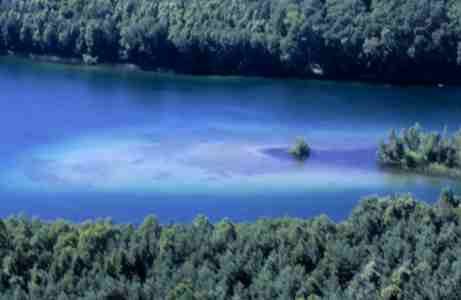
Visiting
Ca 15 000 persons yearly visits Drawa NP. The most attractive activity is canoe route on the Drawa River (ca 3 days). Others kinds of activity are: walking and bicycle routes. Fishing (angling) is allowed in some places - on the Drawa River and Ostrowiec lake. Invite to Drawa National Park ! Photo gallery Marek Czasnoję
Marek Czasnoję
 Jerzy P³otkowiak
Jerzy P³otkowiak
 Krzysztof Staniszewski
Krzysztof Staniszewski
 Pawel Pawlaczyk
Pawel Pawlaczyk
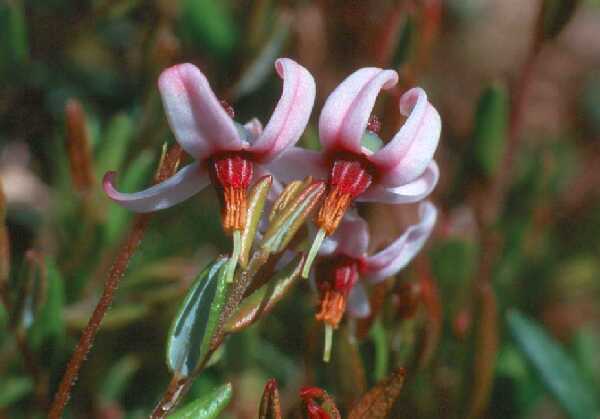 M. Lamentowicz
M. Lamentowicz